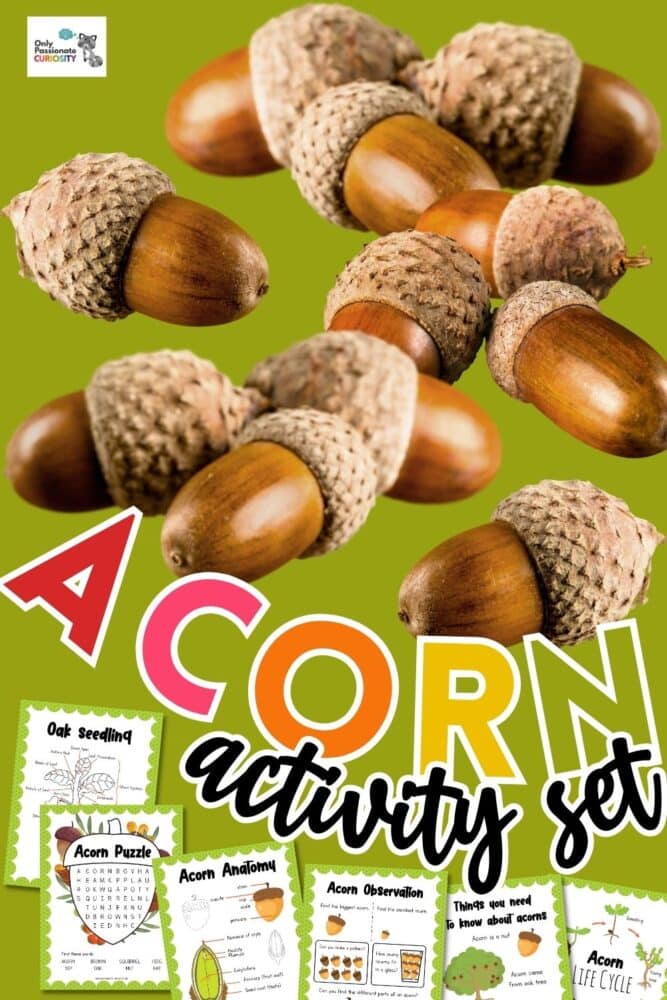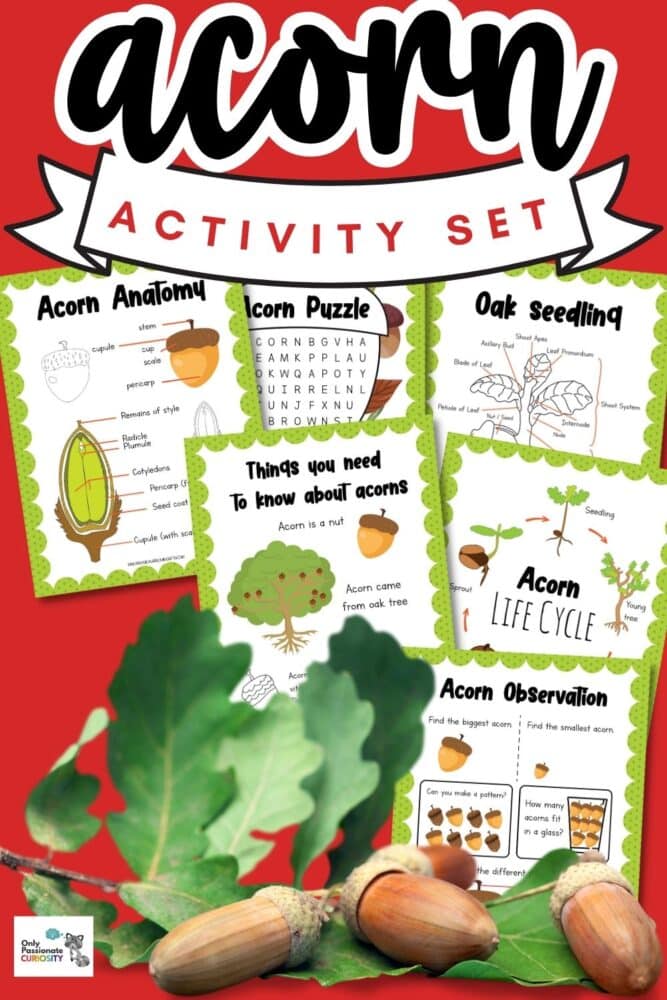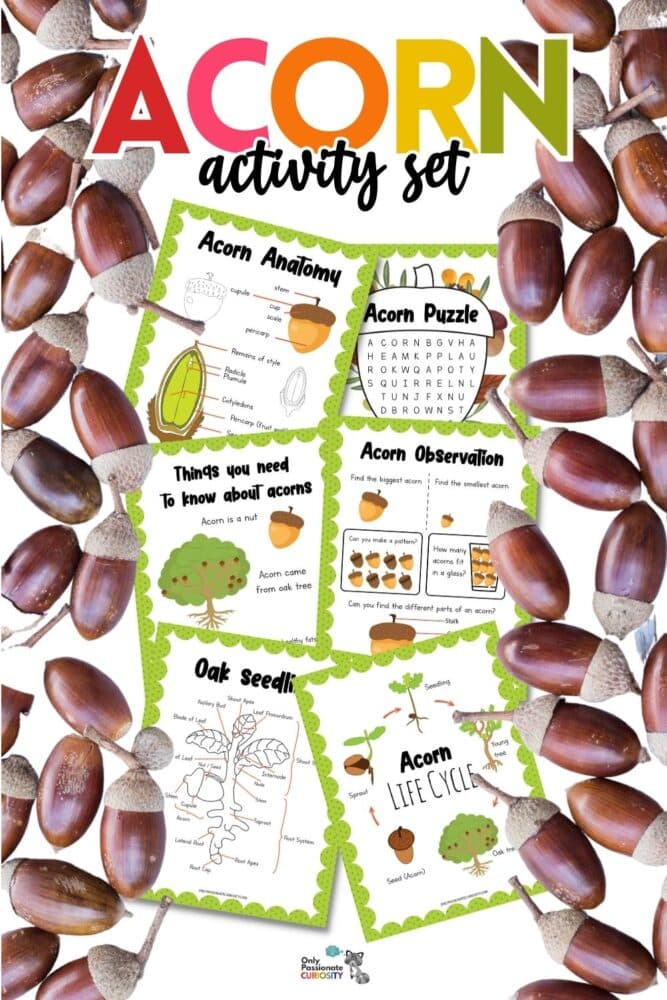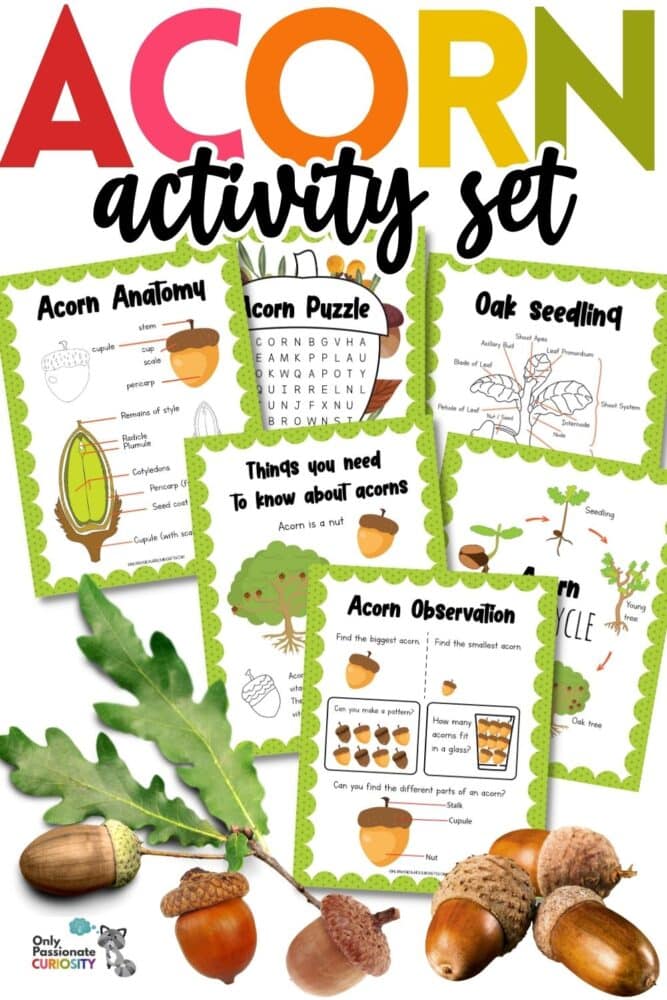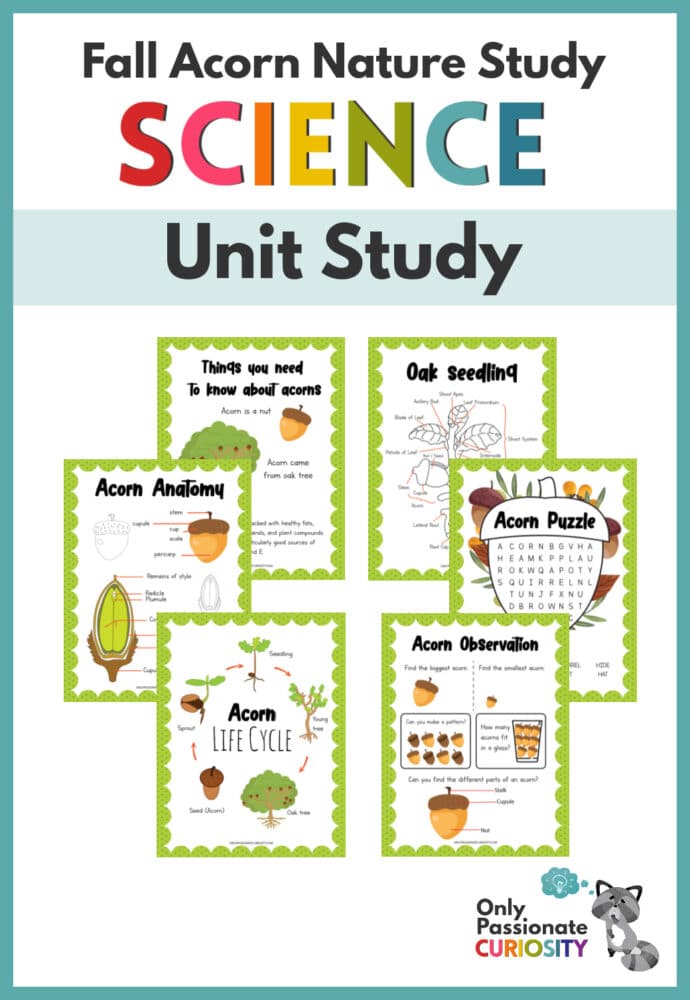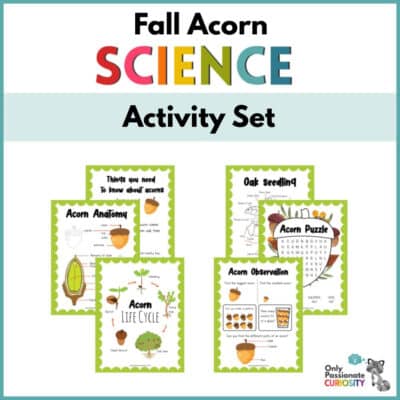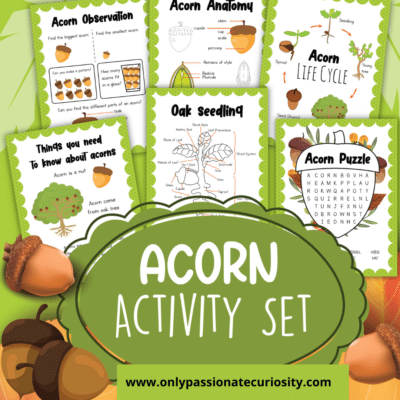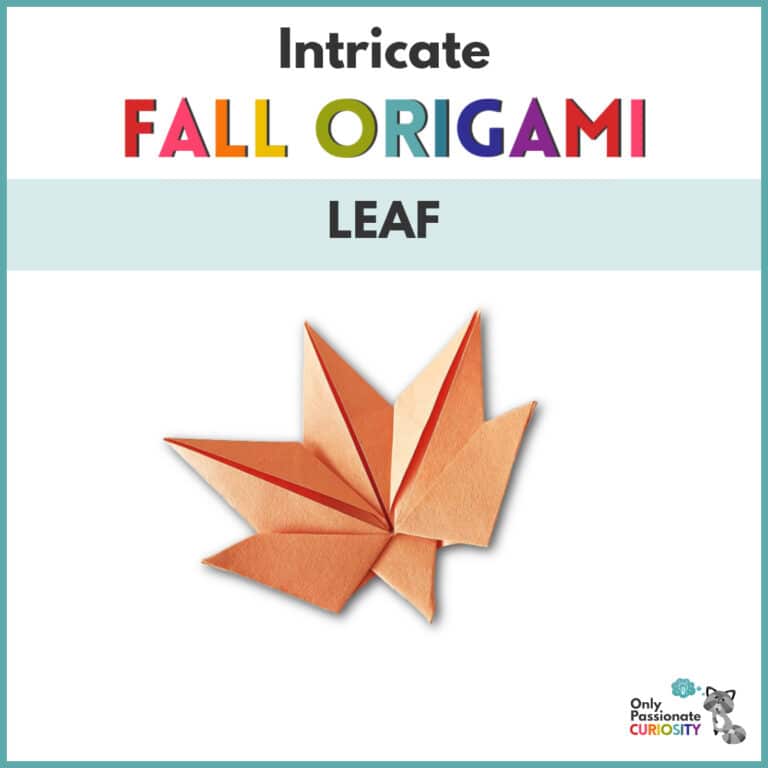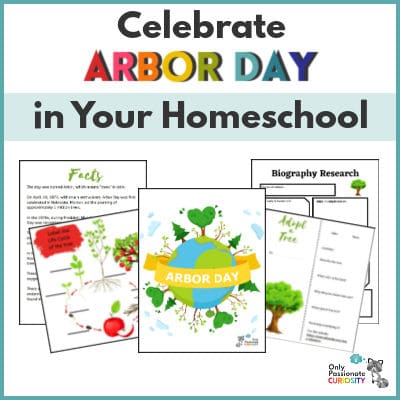Acorn Activity Set
In many areas of the country, fall has arrived! Even down here in the South, our days are cooler (well…at least in the early morning hours), leaves are falling, and squirrels are beginning to store acorns for the coming winter. Perfect time for an educational acorn activity.
When my children were little, we used to love to watch squirrels chitter and fuss at each other, run around the yard with those jerky little movements, and chase each other through the trees. And of course, we loved watching them cram their little cheeks full of acorns!
Fall Acorn Activity Set
Now is a great time of year to teach your children about acorns with this Fall Acorn Activity Set! Not only will they enjoy learning about acorns, but you might want to use it as a way of getting them interested in doing nature journaling.
If you think your children are too young for nature journaling, they’re not! I love the idea of beginning a nature journal with each child and adding to it over the years. When your children are adults, their nature journals will be things they cherish and that they may one day share with their own children.
If you’re not sure why or how to start nature journaling with your children, you might want to start by reading 10 Reasons to Keep a Nature Journal. Then you may want to print a Nature Journal for Little Learners or try some of these ideas for a Fall Leaf Nature Journal. (NOTE: To get the Nature Journal for Little Learners for free, put in 0.00 when you see the pay-what-you-can option.)
Whether or not you choose to include nature journaling, your young children will enjoy these acorn activities! The set is easy to use, colorful, and can be printed as many times as needed for each of your children to have a copy.
This printable Fall Acorn Activity set includes:
- the life cycle of an acorn
- where acorns come from and what they eventually become
- the parts of an oak seedling plant
- the parts of an acorn
- fun facts about acorns
- a word-find puzzle
- an observation sheet for working on patterns, sizes, and counting
Grab your Acorn Activity Set here!
Fun Facts about Acorns
To turn the acorn activity into a unit study, here are some interesting facts about acorns:
- Tiny Nut, Big Tree: Acorns might seem small, but they hold impressive potential. Each little acorn has the power to grow into a mighty oak tree. That’s like having a whole forest packed into a nut!
- Acorns Galore: Oaks are quite the overachievers when it comes to producing acorns. Some oak trees can produce thousands of these little gems in a single year. It’s nature’s way of ensuring that at least a few of them get the chance to sprout and grow.
- Nutritional Powerhouses: Acorns have been used as a source of food for centuries. They’re not just for squirrels! Indigenous cultures around the world have recognized their value, often grinding them into a fine powder to make flour for baking. Now there’s an acorn activity for you!
- Squirrel Stash Central: Ever wonder why squirrels go bonkers collecting acorns in the fall? It’s because they’re planning ahead for the cold months. Squirrels bury acorns as a winter food stash. However, they sometimes forget where they hid them, inadvertently helping oak forests spread.
- Mother Nature’s Packaging: The caps on acorns aren’t just for looks; they play an important role. They act like little hats, protecting the precious nut inside. As the acorn matures, the cap can become quite decorative, almost like a unique signature for each oak species.
- A Feast for Wildlife: It’s not just squirrels that love acorns. Deer, birds, and other animals also feast on these nutritious nuggets. They provide a vital food source for wildlife during times when other food might be scarce.
- Nature’s Chemistry Experiment: Before humans relied on agriculture, they experimented with ways to make acorns edible. Acorns contain tannins that can make them bitter and a bit tough to eat. Traditional methods involved leaching, grinding, and rinsing to remove the tannins and make them tasty and safe to consume. This acorn activity was quite time-consuming.
- Symbolism and Culture: Throughout history, acorns have held various symbolic meanings in different cultures. They’re often associated with strength, potential, and growth – all qualities that align with the mighty oak trees they grow into.
- Oak Royalty: The oak tree itself has been revered in many cultures. It’s often seen as a symbol of endurance, wisdom, and even nobility. In fact, the oak tree is the national tree of the United States and is a prominent emblem in many coats of arms.
Interested in teaching your kids more about trees? Check out these Tree Study Activity Ideas.



